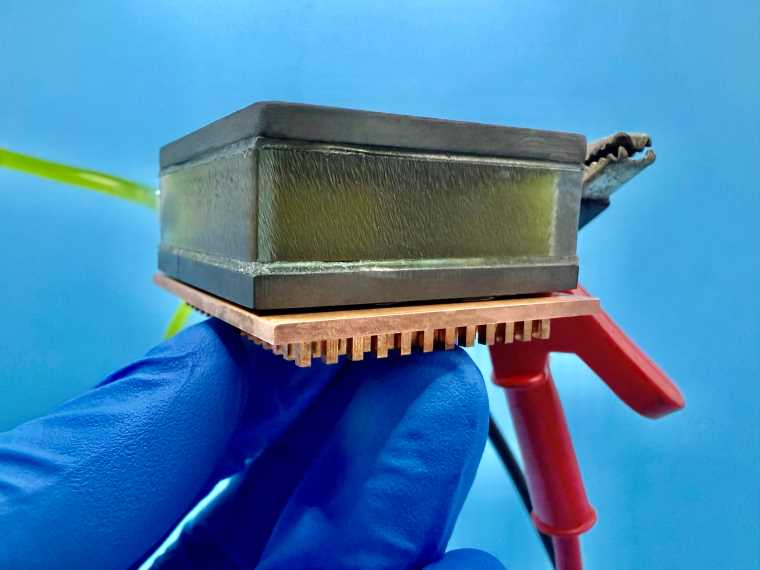Chinese scientists claim a new class of thermogalvanic cells used for cooling is 70% more powerful than previously tested thermogalvanic cells.
Designed to reduce temperatures using an electrochemical process instead of the traditional refrigeration processes used in the majority of industrial and commercial cooling applications, thermogalvanic cells are more efficient and use significantly less power. The researchers behind the claim say their technology could offer several practical applications due to its scalability, ranging from industrial cooling to personal wearable devices.
“Thermogalvanic technology is on its way to our lives, either in the form of clean electricity or low-power cooling, and both research and commercial communities should be paying attention,” said senior author of the study outlining the new cell’s design, Jiangjiang Duan of Huazhong University of Science and Technology in Wuhan, China.
Thermogalvanic Cells Give an Ion or Take an Ion
In principle, thermogalvanic cells operate by an electrochemical redox reaction involving a solution filled with dissolved iron ions. Due to the unique nature of this type of reaction, the iron ions either gain or lose an electron depending on which phase the reaction is in. When an electron is gained, the solution releases heat.
Conversely, the electrolyte solution is cooled down when an electron is lost. In cooling applications, a heat sink traps the heat generated by the electron-gained portion of the cycle. At the same time, the solution cooled down during the electron loss cycle and transferred that cooling to the desired application.
Unfortunately, previous attempts to exploit this electrochemical reaction have shown meager results. According to the study authors, the best-recorded cooling is around 0.1 degrees K. While notable, this level offers little value for practical cooling applications.
In their published study, the Chinese researchers say that previous efforts primarily focused on the original system design and numerical simulation. For their new thermogalvanic cell, Duan says they employed a “rational and universal design strategy” that could enable “a record-high cooling performance that is potentially available for practical application.”
The team found the right mix after tweaking the types and ratios of solvents and solutes used in the electrolyte solution. For example, they used hydrated iron salt containing perchlorate. This new solution allowed the iron irons to dissolve and “dissociate” more freely than previously tested iron-containing slats like ferrocyanide. The researchers say that by dissolving their selected iron salts in a solution containing nitriles instead of pure water, they realized a cooling power increase of 70%.
“The optimized system was able to cool the surrounding electrolyte by 1.42 K, which is a big improvement compared to the 0.1 K cooling capacity reported by previously published thermogalvanic systems,” they explain.
New Improvements From Novel Mechanisms and Advanced Materials
Although these cells’ cooling effects are not enough to replace refrigerators and air conditioners in the short term, their ability to remove heat cheaply and effectively still has many potential uses. The teams said they are looking into new ways to improve cooling power while searching for commercial partners to bring their environmentally friendly cooling technology to the general marketplace.
“Though our advanced electrolyte is commercially viable, further efforts in the system-level design, scalability, and stability are required to promote the practical application of this technology,” says Duan.
“In the future, we aim to continuously improve the thermogalvanic cooling performance by exploring novel mechanisms and advanced materials,” Duan added. “We are also attempting to develop diverse refrigerator prototypes towards potential application scenarios and are seeking to collaborate with innovation companies to promote commercialization of thermogalvanic technologies.”
The study “Solvation entropy engineering of thermogalvanic electrolytes for efficient electrochemical refrigeration” was published in Joule.
Christopher Plain is a Science Fiction and Fantasy novelist and Head Science Writer at The Debrief. Follow and connect with him on X, learn about his books at plainfiction.com, or email him directly at christopher@thedebrief.org.

